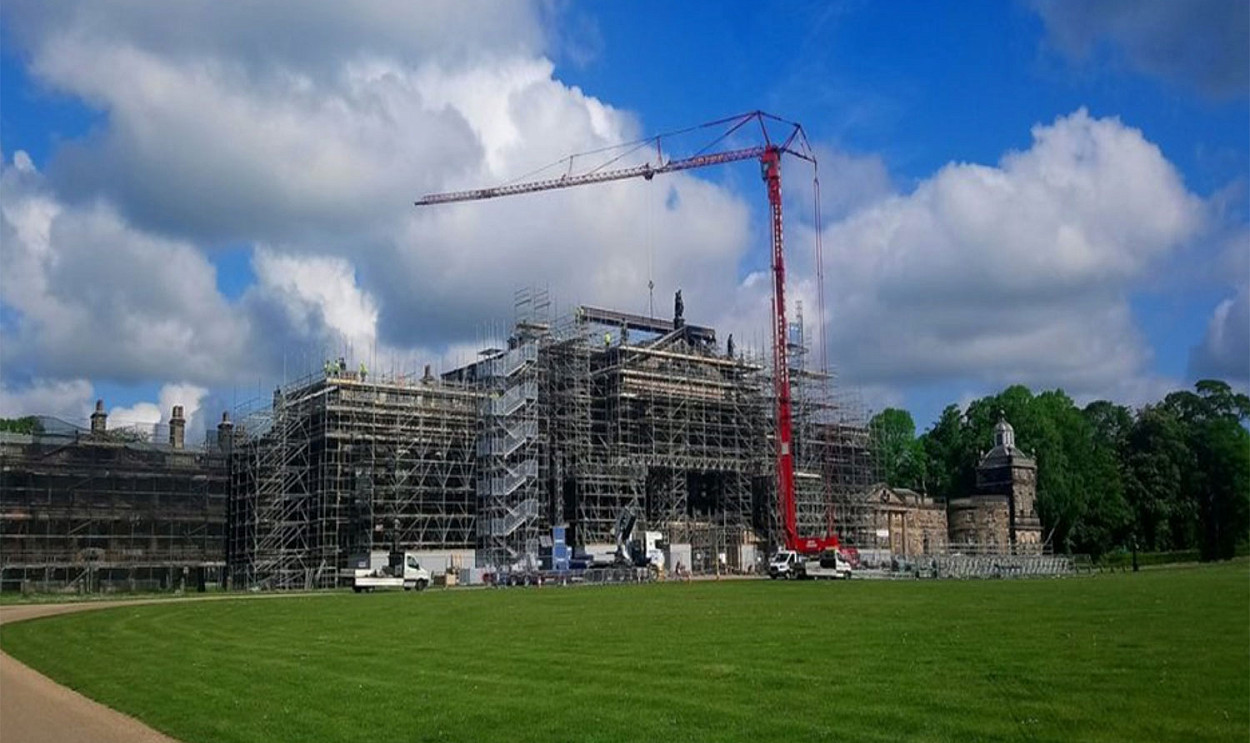

 Location:Rotherham, South Yorkshire
Location:Rotherham, South Yorkshire Client:Wentworth Woodhouse Preservation Trust via Woodhead Group
Client:Wentworth Woodhouse Preservation Trust via Woodhead Group Value:£10 million
Value:£10 million
Wentworth Woodhouse, the largest private home in the UK, has five miles of corridors, a 606-foot façade, and over 250,000 square feet across more than 300 rooms.
In 2017, the building sold for £7m – with an estimated £100m restoration bill attached. A huge feat for building surveying in Yorkshire, along with specialist contractors, this landmark project was set to take a similar scale as the Buckingham Palace restoration.
Construction consultancy services like those provided by Alan Wood & Partners (AWP) are essential for projects like this. A full and detailed overview of restoration projects is important to understand the overall cost, strategy, and repair requirements before a single tile is replaced. Without a clear plan, often created years before any work is carried out, a restoration project can go over budget, over schedule, and miss essential elements (such as the specialist heritage repairs required on the roof balustrades at Wentworth Woodhouse).
AWP’s role on this project was to provide temporary works support to the Woodhead Group who had been selected by the Wentworth Woodhouse Preservation Trust (WWPT) to carry out the repair, restoration and replacement of the building’s 1500m² (16,000+ square foot) roof, as part of its 25-year Masterplan (Phase 2).
The work would see the delivery of major conservation work over the next two years supported by AWP’s structural engineers with regards to the temporary works. On a project of this scale the temporary works design/installation form a vital part of the successful delivery.
Urgent repairs were conducted first to prevent further decay and collapse of essential elements such as roofs and gutters. Short-term solutions were immediately installed across all buildings to prevent further damage, while a long-term plan was put in place.
The £7.6m grant was split into three contracts to specialist heritage and roofing contractors. Each contractor was responsible for a section of the mansion roof repairs, enabling the works to be completed simultaneously to protect the interiors from further roof damage as fast as possible. The first contract completed in 2020.
Other projects